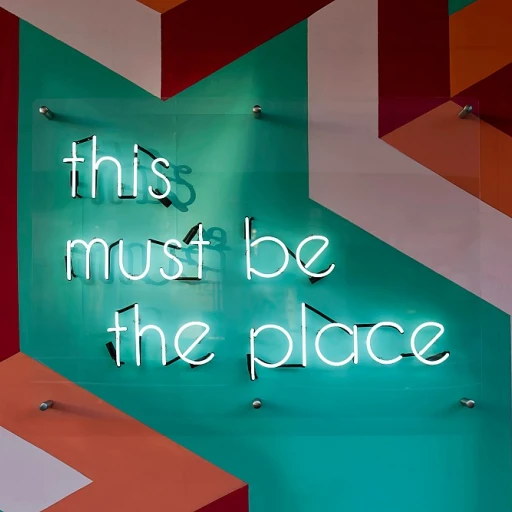
Understanding the Skills Gap
Identifying the Divide in Skill Sets
Navigating the world of work today demands a deeper comprehension of the much-discussed skills gap. This concept refers to the mismatch between the skills employers need and what job seekers, even those career-oriented, bring to the table. In recent years, this gap has become increasingly apparent, impacting both entry-level job seekers and seasoned professionals alike. Why does this gap exist? Several factors contribute to this growing divide. The rapid pace of technological advancement, for one, often outpaces our ability to keep up, leading to a shortfall in necessary skills. Additionally, many educational programs, although designed with good intentions, may not be fully aligned with current industry demands, leaving students unprepared for the real-life challenges they face upon entering the professional world. For people who are career-focused, understanding these gaps is crucial. Being aware of the skills presently in high demand can help guide career development and work orientation efforts effectively. Achieving career goals today requires an awareness of industry trends and an openness to continuous learning and adaptation. As an oriented person pursuing a fulfilling career path, it is essential to not only learn new skills but to also understand how these skills integrate into broader industry needs. By embracing a mindset characterized by career-driven growth and work-life balance, individuals can better address these challenges, enhancing their ability to thrive in a competitive job environment. For more insights into what it truly means to be focused in one’s career, consider exploring what it means to be career-oriented and the implications it has on personal and professional growth.Impact on Career-Oriented Individuals
Influence on Today’s Job Seekers
The skills gap is a significant challenge for those who are career driven, especially as they strive to align their qualifications with the demands of today’s job market. Career oriented individuals often find themselves grappling with the realization that what they learned in school might not fully equip them for their desired career paths. This scenario demands a reevaluation of career goals and places pressure on individuals to remain adaptable and quick to learn new skills. Many professionals, particularly recent graduates, students, and those undergoing job search, experience the strain of fulfilling job oriented criteria set by employers. With the economy rapidly evolving, the gap not only affects job seekers but also calls for a shift in how people perceive work orientation and life balance. Here are some ways the skills gap impacts career oriented persons:- Work Preparedness: Many individuals enter the workforce only to realize there is a disconnect between their education and job requirements. This leads to a need for continued teaching and development.
- Career Goals Adjustment: Those focused on long-term career growth may need to adjust their trajectories and explore different roles that were not initially considered.
- Professional Development: An ongoing need for training and development to align with high industry standards can mean more time dedicated to acquiring new skills even in a full time job scenario.
Industries Most Affected by the Skills Gap
Industries Confronting the Skills Gap Challenge
The skills gap is a pressing concern impacting various industries, influencing how career-oriented individuals navigate their professional lives. To maintain a sustainable work life balance and achieve career goals, it's crucial to recognize which sectors are most affected.
Many industries are grappling with a rapidly evolving landscape. In particular, those that rely heavily on technology and specialized knowledge encounter profound skills gaps. This includes areas like:
- Technology and IT: The field is advancing at an unprecedented rate, creating a demand for skills that many workers have yet to acquire, such as coding, cybersecurity, and data analysis.
- Healthcare: Professionals are needed to meet new technological demands and provide care in an ageing population, making ongoing training essential.
- Manufacturing: With automation on the rise, there's a need for a workforce adept in both traditional skills and new technological processes.
For professional individuals, aligning their career orientation with industry demands can mean the difference between a stagnant job search and a successful, fulfilling career path. This requires not only acquiring high-demand skills but understanding the trajectory of their chosen field. As industries adapt, so must the career-driven and job-oriented workforce.
Organizations themselves must also adapt by implementing oriented programs to help bridge the skills divide, fostering an environment that values both skill acquisition and development. This creates a better alignment between career-focused individuals and the positions that require specialized expertise.
To ensure that industries are well-prepared to face these challenges, it is critical to address leadership issues that significantly influence corporate strategies. In-depth insights on this topic can be explored further in a discussion about leadership crisis at Johnson Campus Groups.
Strategies for Bridging the Skills Gap
Effective Approaches to Closing the Gap
Bridging the skills gap requires a multifaceted approach, especially for those who are career oriented and seeking long-term job satisfaction. Here are some strategies that can be instrumental:- Embrace Lifelong Learning: Emphasizing the importance of continuous education can significantly help in narrowing the skills gap. Individuals need to cultivate a learning mindset that focuses on adapting to new professional challenges. This can be vital for achieving one’s career goals effectively.
- Utilize Professional Development Programs: Many organizations and educational institutions offer targeted programs aimed at enhancing specific skills. These programs often provide career-focused curriculums that meet the evolving demands of the job market, catering specifically to an oriented person's needs.
- Seek Out Mentorship and Coaching: Partnering with a mentor who has insight into your desired career path can offer personalized guidance and advice. This relationship can foster growth, not just in skill development but also in work orientation and life balance.
- Engage with Career-Oriented Workshops and Networking Events: Being proactive in attending events designed to improve job-oriented skills or work-life balance can be rewarding. These gatherings provide platforms to learn from peers and industry leaders who have successfully navigated similar challenges.
- Volunteer and Internship Opportunities: These provide invaluable work experience, allowing students and professionals to apply skills in real-world settings, thereby enhancing their career development. Job seekers often find that these experiences help to narrow the skills gap.
- Adapt to Technological Changes: As technology rapidly evolves, staying updated with the latest tools and software is critical. Embracing new technologies not only makes you technologically savvy but can also open doors for new career paths.
Role of Education and Training Programs
Educational Pathways and Training Solutions
Navigating the skills gap often begins with our educational systems, guiding those on their career path towards mastery in essential competencies. Many professional and career focused individuals find themselves in need of continuous learning—be it through traditional education or innovative training programs. For school students aspiring for job-oriented roles, high school curriculums integrated with career development modules can provide a foundational work orientation. These programs not only help students identify their calling oriented career goals early on but also prepare them for realistic job expectations. Meanwhile, institutions of higher learning are adapting, offering targeted programs to bridge the gap between academic learning and practical application. Full time and part time courses focused on specific skills help career driven students and career oriented people to learn what’s pertinent to their chosen fields.Corporate Training and Development
For those already in the workforce, continuous professional development is crucial. Many companies are investing in comprehensive training solutions as part of their work life and term career strategy, ensuring their teams are equipped with the most current and relevant skills. Career-oriented training programs emphasize skills development aligned with specific industry needs. These can range from workshops, seminars, online courses, and even on-the-job training that empower employees to pursue their career goals effectively. Moreover, partnerships between educational organizations and businesses create robust opportunities for knowledge transfer, enhancing the skills of both new and seasoned employees. As an oriented person committed to professional growth, tapping into these resources ensures you remain valuable and competitive in your job search and overall career journey.Balancing Life and Learning
Balancing career development with personal life is a concern shared by many, especially when time is a limited resource. The right orientation programs help maintain a healthy life balance, enabling professionals to pursue their development without harming personal goals or commitments. Career oriented individuals should strive to identify training that not only fills the skills gap but also complements their lifestyle. In this era, flexibility is key. Online courses or modular learning allow for a customized learning pace, making it feasible to align career-focused training with personal life demands. In conclusion, staying proactive about learning and development while making informed choices about educational and training options can mitigate the challenges posed by the skills gap. Such a strategic approach benefits the individual by enriching job competence and aligns career paths with future professional demands.Future Trends in Skills Development
Emerging Trends in Skills Development
As we look to the future, the landscape of skills development is rapidly evolving, driven by technological advancements and shifting job market demands. For career-oriented individuals, staying ahead of these trends is crucial to maintaining a competitive edge in their professional life.
Emphasis on Lifelong Learning
The concept of lifelong learning is becoming increasingly important. In a world where technology and industries change at a rapid pace, the ability to continuously learn and adapt is essential. Career-focused people are encouraged to engage in ongoing education and training programs that align with their career goals. This approach not only enhances their current job performance but also prepares them for future career paths.
Integration of Technology in Learning
Technology is playing a pivotal role in skills development. Online courses, virtual workshops, and digital certifications are becoming more prevalent, providing flexible learning opportunities for both students and professionals. These platforms allow individuals to learn at their own pace, balancing work life and personal commitments while acquiring new skills.
Focus on Soft Skills
While technical skills remain important, there is a growing recognition of the value of soft skills in the workplace. Skills such as communication, teamwork, and problem-solving are increasingly sought after by employers. Career-driven individuals are encouraged to develop these intangible skills to enhance their work orientation and job performance.
Customized Learning Paths
Personalized learning experiences are becoming more common, allowing individuals to tailor their education to their specific career needs. This trend is particularly beneficial for those with a clear career orientation, as it enables them to focus on acquiring the skills most relevant to their professional goals.
In conclusion, staying informed about these future trends in skills development can help career-oriented people navigate the evolving job market. By embracing lifelong learning, leveraging technology, and focusing on both technical and soft skills, individuals can position themselves for success in their chosen career paths.












